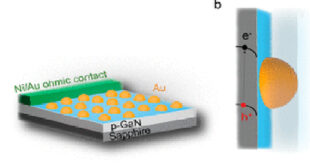Significance
Interferometers employing vortex beams bring a wealth of possibilities to optical measurement due to the added dimension of information provided by orbital angular momentum (OAM). When a vortex wave is superimposed with either a fundamental Gaussian wave or its conjugate, it generates a distinctive spiral or petal-like fringe pattern that rotates azimuthally as the phase shifts. Crucially, the direction of the phase shift can be easily discerned by observing the clockwise or anti-clockwise rotation of the fringe pattern, which is dictated by the handedness of the OAM light. Moreover, the 2π benchmark in the azimuthal direction ensures a high theoretical phase retrieval accuracy for vortex interferometers.
To date, phase retrieval in vortex interferometers has predominantly relied on morphological operations applied to the spiral or petal-like fringe patterns captured by array detectors. In the case of spiral fringe patterns, methods like principal component analysis based on rotational spiral fringe training and moiré pointer image recovery have been developed to identify uniform phase shifts. Petal-like fringe patterns, on the other hand, present different challenges, as they rotate at varying angles at different radii, resulting in highly distorted petals that impede traditional morphological operations. Nevertheless, various techniques such as petal centroid identification, image correlation, circular cross-correlation, and anti-correlated pixel pair difference have been employed to measure uniform phase shifts in petal-like fringe patterns. One notable limitation in the existing repertoire of vortex interferometry techniques is the measurement of dynamic non-uniform phase shifts. Existing methods struggle to accurately capture and analyze such phase shifts, especially when dealing with petal-like fringe patterns. In response to this challenge, a recent study published in the peer-reviewed Journal Optics Letters by a team of researchers led by Associate Professor Jingtao Dong at Hefei University of Technology presented a novel approach based on Doppler frequency shift. The innovation revolves around the use of vortex beams, offering a promising avenue for optical measurements by harnessing the unique properties of OAM carried by helical phase profiles.
The researchers demonstrated a vortex interferometer capable of retrieving dynamic non-uniform phase shifts from petal-like fringe patterns generated by the superposition of high-order conjugated Laguerre–Gaussian (LG) modes. In their approach, a dynamically deformed surface is introduced into one arm of the interferometer. A detection assembly, consisting of a rotating chopper, a lens, and a point photodetector, is employed to introduce a carrier frequency before the surface deformation begins. As the surface deforms, the petals at different radii exhibit varying Doppler frequency shifts, determined by their rotation velocities. Identifying these Doppler frequency peaks in the spectrum provides crucial information about the rotation velocities of the petals and the corresponding phase shifts at those radii.
The authors’ experimental setup is based on a typical Mach–Zehnder interferometer configuration, where a stabilized He-Ne laser beam is first expanded and directed to a spatial light modulator (SLM). The SLM generates a high-order LG beam with specific characteristics. After passing through various optical components, including a dynamically deformed surface, the petal-like fringe pattern is produced at the interferometer’s exit. A lens collects the intensity of the fringe pattern, which is then delivered to a point photodetector. The researchers’ results demonstrated the feasibility and accuracy of this approach. The study reveals that the dynamic non-uniform phase shift can be accurately retrieved from the Doppler frequency shifts in the petal-like fringe patterns. Furthermore, the relative error of phase shift measurement is shown to be within 2.2% under various conditions, including different deformation velocities.
While this innovative approach to dynamic non-uniform phase shift measurement in vortex interferometers shows great promise, there are certain limitations and challenges that need to be considered. The velocity range that can be measured is determined by both the carrier frequency and the dynamic range of phase shift measurement. Additionally, the frequency resolution plays a critical role in accurately identifying Doppler frequency peaks. The lower limit of measurable velocities is constrained by the noise floor and the frequency resolution, emphasizing the importance of optimizing experimental conditions. Moreover, the lateral offset between the center of the LG beam and the deformed surface can introduce errors in identifying Doppler frequency peaks, particularly when the velocity bandwidth carried by each ring of the LG beam is broadened. This limitation suggests that the proposed method is more suitable for non-uniform but axisymmetric phase shift measurements.
The study led by Associate Professor Jingtao Dong and his team at Hefei University of Technology represents an important advancement in optical measurement techniques. By harnessing the unique properties of vortex beams and introducing Doppler frequency shift analysis, the researchers have opened up new avenues for the precise measurement of dynamic non-uniform phase shifts in petal-like fringe patterns. This innovation holds great promise for applications in studying nanometer to micrometer-scale mechanical and thermophysical dynamics.
Reference
Dong J, Tian Z, Wang S, Xie L, Li Y, Zhao E. Dynamic non-uniform phase shift measurement via Doppler frequency shift in vortex interferometer. Opt Lett. 2023 ;48(8):2018-2021. doi: 10.1364/OL.489244.
 Advances in Engineering Advances in Engineering features breaking research judged by Advances in Engineering advisory team to be of key importance in the Engineering field. Papers are selected from over 10,000 published each week from most peer reviewed journals.
Advances in Engineering Advances in Engineering features breaking research judged by Advances in Engineering advisory team to be of key importance in the Engineering field. Papers are selected from over 10,000 published each week from most peer reviewed journals.

